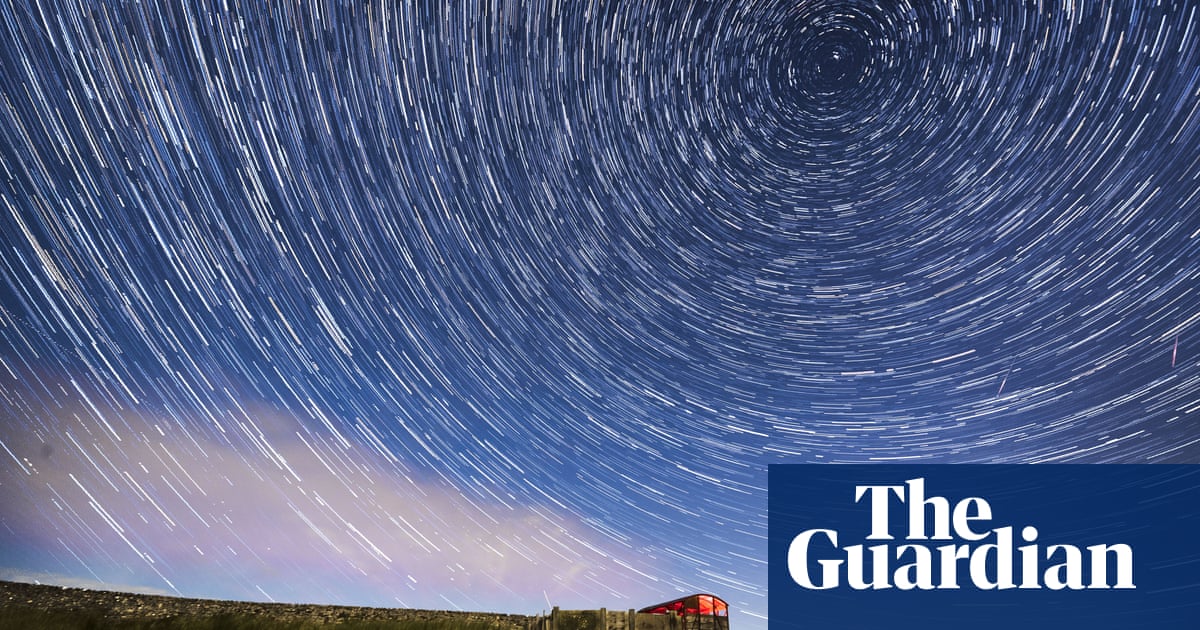Stargazers and early risers are in for a stellar show this week, with one of the biggestmeteorshowers in the southern hemisphere due to light up the skies.
The meteors —called the Eta Aquariids– pass through the atmosphere every year, but 2025 is due to be particularly luminous as the moon won’t be visible when they arrive.
Here’s how to catch a view of the celestial delight.
The Eta Aquariids are caused by earth passing through debris left behind byHalley’s Comethundreds of years ago.
Dr Rebecca McElroy, an astrophysicist from the University of Southern Queensland, said Earth passes through the debris field every year.
As the bits of rock and dust hit the atmosphere at high speeds, they burn up and create bright streaks – creating what we call meteors.
“Meteors tend to look like a bright streak going by, like a shooting star, but more,” McElroy said. “Occasionally they happen just randomly – when something of a high density is in our path.”
It is known as “Eta Aquariids” because of the part of the sky in which the meteors appear – which is near the star Eta Aquarii in the constellation of Aquarius.
The good thing is this particular meteor shower not onlyhappens every year, but spans over multiple days.
McElroy said Wednesday 7 May would be the “best day” for stargazers, with around two dozen meteors expected to pass per hour.
But if it happens to be cloudy that day, you won’t blink and miss it. The shower will continue to have a strong showing on the days preceding and following 7 May, before tapering off at the end of the month.
“Often these things are quite short lived … it’ll peak this week but it will continue,” McElroy said.
Unfortunately, though, the best viewing window is between 3am and 5am – “not for the faint hearted or those who feel the cold”.
If you happen to find yourself awake in the early dawn, though, you’re in luck.
The Eta Aquariids can be viewed anywhere in the world, but they are best seen from the southern hemisphere where the shower will rise in the pre-dawn, darkened sky.
In Australia, every state and territory will be able to witness the display. But McElroy said areas with the lowest light pollution would have the greatest visibility – such as Uluru and remote parts of the Northern Territory.
“These things aren’t enormously bright, so you want to get away from as much light pollution as you can,” McElroy said. “If you’re in the city, get into the suburbs and away from bright lights.”
Australia is lucky. McElroy said the best skies she’s seen have been Down Under and in Chile because they look towards the centre of the Milky Way.
“In the northern hemisphere, you spend most of the year looking to the outskirts, but our winter happens to have the Milky Way’s centre up in sky, and parts of Australia are very dark with a lot of protected [areas], like national parks,” she said.
After heading outside, McElroy said you should first “check the weather … That’s the most important part. If it’s cloudy you’re not going to see anything, which is the curse of astronomy”.
Then, turn off any porch or external lights and look away from bright street lights or your phone – which resets our daytime vision.
“Our eyes have a high dynamic range, and it takes 10 to 20 minutes to adjust to the night sky,” McElroy said. “Grab a blanket, have a lie down and stay out there for an hour.”
The constellation of Aquarius, where the meteors will appear, are in the north-east of the sky. Apps such as Star Mapper or Stellarium can help display the correct spot – but make sure you keep your brightness down.
There are four meteor showers similar to Eta Aquariids which occur throughout the year – most notably, the Orionids meteor shower, which is also caused by the Halley’s Comet debris trail and happens in October.
But McElroy said meteor showers can also be a great gateway tolook at the rest of the sky.
“A meteor shower is great, but we are blessed with fantastic skies in Australia, especially in the winter,” she said.
“We will be able to see whole band of Milky Way, and if you stay outside for longer, you’ll see more and more fainter stars light up. You can look for the Southern Cross, spot some star clusters or the Emu constellation.
“Come for the meteors, stay for the Milky Way.”
